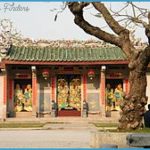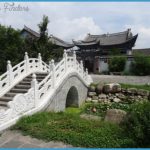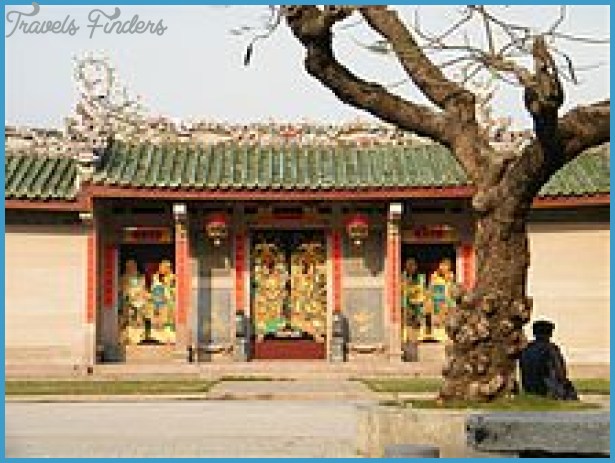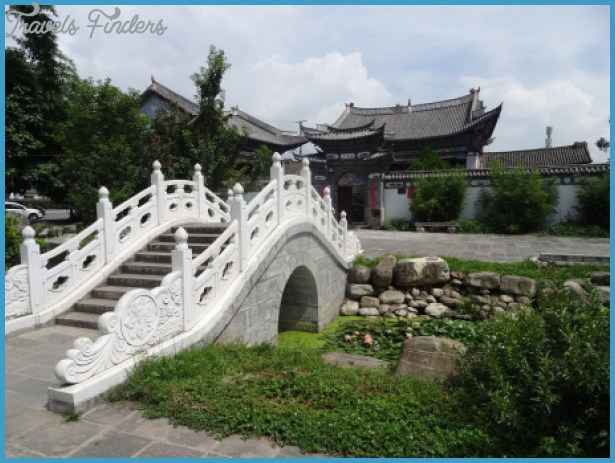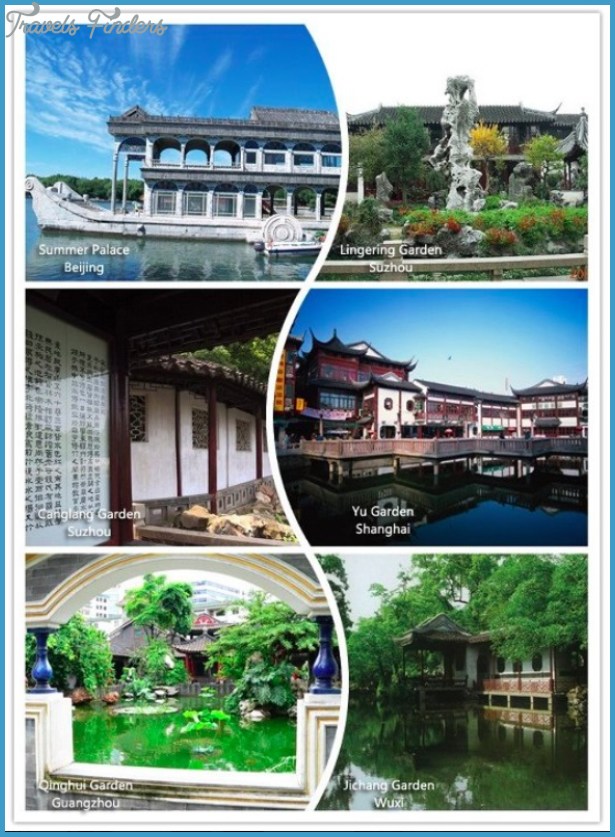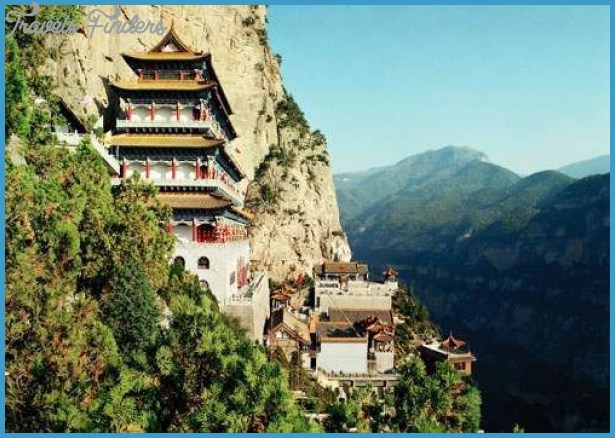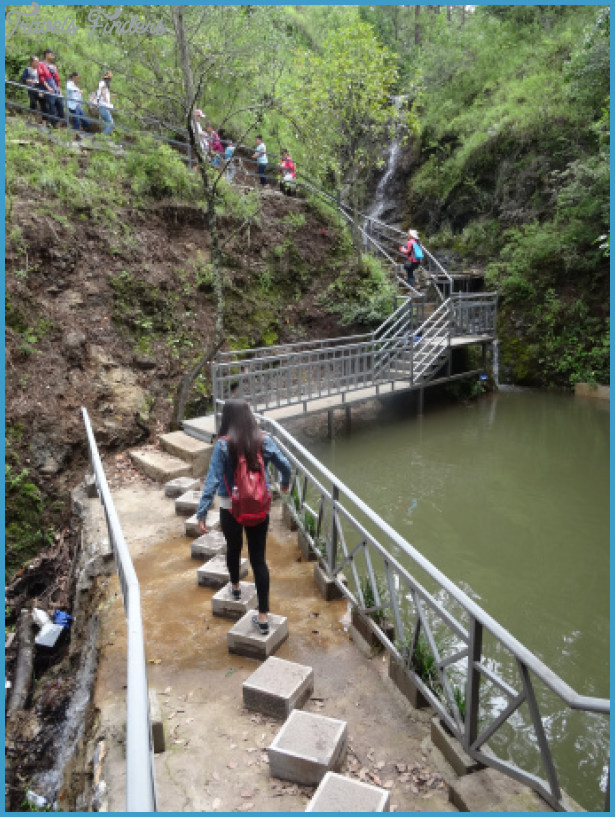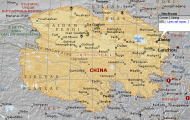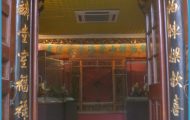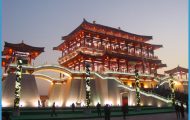The original floral pagoda, dating from 537, burned down in the 10th c. and was reconstructed in its presentform in 1097 from a drawing ofthe original building. During the restoration work of 1980 some tiles were discovered with inscriptions which probably date from the Song era. The top of the 57m/187fthigh pagoda, which can ascended by a flight of steps, is crowned by a richly decorated bronze column weighing 5 tonnes.
The Hall of the Goddess of Mercy dates from 1663. Inside it a 4m/13ft high 5 tonne bronze sculpture is housed. It represents Guanyin, the Chinese goddess of love.
The Mosque in Memory of the Wise Man, situated in the city centre 300m/330yd south of the Temple of the Six Banyan Trees, is one of the oldest mosques in China. It is supposed to have been built by an Arab in 627 in honour of Mohammed. It is also known as the Lighthouse Mosque (Guangta Si) because its 36m/118ft high minaret is fitted with lighting equipment and in the past was actually used as a lighthouse. Today this house of prayer is the centre of the city’s Muslim community.
Between 1890 and 1894 the great ancestral temple ofthe Chen family was built in Zhongshan Lu. It is famous for its wood carvings and sculptures, of which particular mention should be made of the figures on the roof ridges which adopt themes from mythology and classical literature.
Today the temple houses the Folklore Museum, in which arts and crafts from Canton and Guangdong are displayed.
Yuexiu Gongyuan Park (928,OOOsq.m/229 acres) is situated at the foot ofthe hill of the same name in the north of the city. It contains several ponds, a hall of flowers, an orchid garden, a sports complex and an open-air cinema.
On the hill stands a five-storey 28m/92ft high palace, the “Building Overlooking the Sea”. It was constructed in 1380 and in 1686 was converted into a watch-tower to guard against pirate attacks.
Today the building is the seat of the Historical Museum of Guangzhou. On the individual storeys there are exhibits on display from the various epochs of Chinese history, while on the top storey there is information available on the Communist movement in Canton.
The 49m/161ft high Memorial Hall is located at the south end of Yuexiu Gongyuan Park and is dedicated to the memory of Sun-Yat-sen (see Famous People), who was the first president of the Chinese Republic, which was founded in 1911. This imposing building was erected in 1931 in the classical Chinese style. The hall, which is used for cultural events, has space for more than 4000 people.
In the gardens in front ofthe hall can be seen a bronze statue of Sun-Yat-sen while to the west lies a small museum which keeps the politician’s memory alive.
The Tomb of the 72 Martyrs on the Hill of the Yellow Flowers commemorates those who lost their lives during the uprising led by Sun-Yat-sen against the Qing government on April 27th 1911. The tomb is situated on the Xianlie Lu, about 3km/2 miles east of Yuexiu Gongyuan Park. It was erected in 1918 and is surrounded by a park. On the arch at the southern entrance are to be found Sun-Yat-sen’s words “Eternal Glory”. The park also contains an obelisk, pavilion and pyramid-shaped building, the upper section of which consists of 72 stone slabs representing the 72 martyrs.
A little further to the north-east of the Tomb ofthe 72 Martyrs on the Hill of the Yellow Flowers lies the Zoo, one ofthe largest in China. The pandas are especially popular.
About 4km/21/2 miles east of the city centre, on Zhongshan Lu, a 26ha/ 64 acre cemetery was laid out in 1957 for the victims ofthe Canton uprising which was led by the Communist party in 1927. The 5700 people shot by the Guomindang government are now buried in a tumulus. In addition the memorial park also contains a pavilion (1957) dedicated to Sino-Soviet friendship and one (1964) to Sino-Korean friendship. These are intended as a reminder that Russians and Koreans also lost their lives in the uprising. In the western section ofthe park stands the Museum ofthe Revolutionary History of Guangdong.

